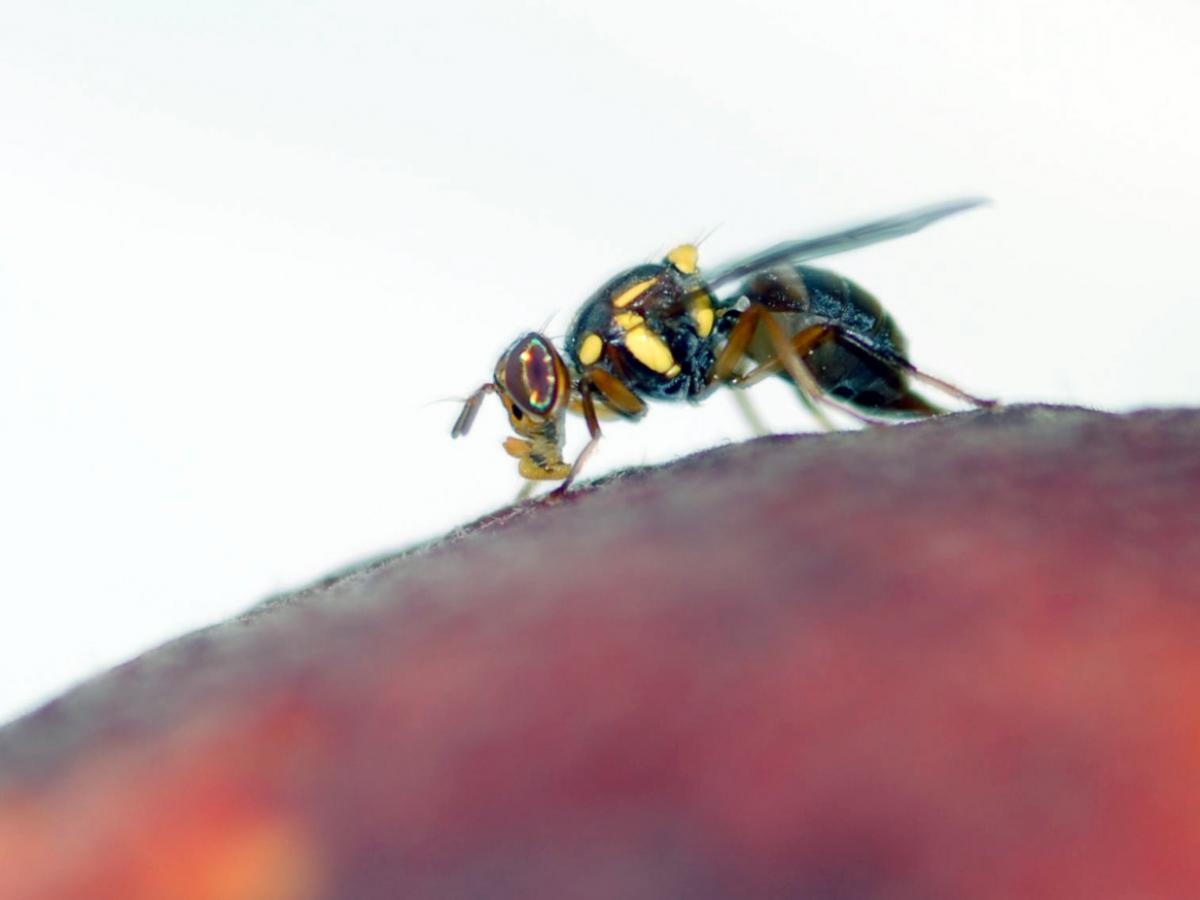Fruit fly control: CRISPR mutagenesis of the yellow2 gene

More than $1.3 billion worth of our crops are at risk of damage by fruit flies.
Recent Queensland fruit fly (Bactrocera tryoni) outbreaks has re-emphasised the threat of this destructive pest to the horticultural industry in South Australia.
Sterile Insect Technique (SIT) is currently being used as a biocontrol strategy to suppress and/or eradicate this insect pest. It is a ‘birth control’ method for fruit flies, where millions of sterile males are released to mate with wild females, resulting in non-viable embryos, thus preventing production of the next generation.
Our aim is to generate a SIT fruit fly strain with a visible marker to facilitate easy tracking of sterile males after release.
We have previously targeted the yellow genes in Queensland fruit fly by CRISPR/Cas mutagenesis, producing flies with a distinctive yellow body and wing colour (Nguyen et al., 2021).
Queensland fruit fly have two yellow-y genes but it is currently unclear if there are any functional differences between the two genes. Our yellow flies contain mutations in either the yellow-y1 gene or double mutations in yellow-y1 and yellow-y2, however the role of the yellow-y2 gene is yet to be determined.
This aim of this project is to create mutations specifically in the yellow-y2 gene in Queensland fruit fly using CRISPR/Cas mutagenesis and to determine its contribution to the yellow body and wing phenotype. This research will allow assessment of the suitability of yellow-y2 as a marker gene for SIT flies.
Research techniques will include preparation of CRISPR reagents, fruit fly embryo microinjections, molecular genotyping (DNA extractions, PCR, sequencing) and performing genetic crosses. Fitness assessment of the different yellow-y fly strains may also be performed.
Supervisors
- Dr Amanda Choo
- Co-supervisors: Dr Elisabeth Fung | Dr Peter Crisp (SARDI)
- Research area: Agriculture, food and wine
- Recommended honours enrolment: Honours in Agricultural Science or Honours in Molecular and Biomedical Science
